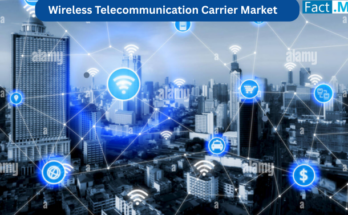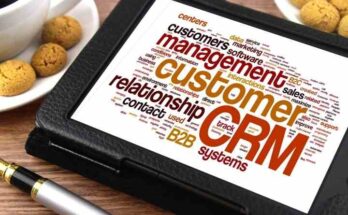The ability to access virtual healthcare has exploded in popularity — particularly following the pandemic in 2020. Without having to physically arrive at a healthcare facility, telehealth allows medical professionals to assist people from the comfort of their own homes. People may be seen by a provider from any location via a digital device.
Telehealth is typically thought of as a quick visit with a general practitioner. However, there are a variety of services available via telehealth — including everything from mental health to dentistry. Telemedicine even allows qualified providers to prescribe the medication you need and have it filled at a pharmacy near you. Those individuals who like to take control of their health should look into an offshoot of telehealth called mHealth.
What Is mHealth?
The mobilization of healthcare is known as mHealth. It’s a subset of telehealth that is more self-led. It includes mobile apps that may be accessed for different health needs, such as meditation and mental fitness. It doesn’t require the presence of a medical provider to serve as a health resource. The primary ways mHealth differs from telehealth include:
- The ability to access health resources on mobile devices, solely
- Mobile app development as the main source of resource creation
- The emphasis on individuals self-regulating and capturing their own data
This is different from on-demand healthcare, however. On-demand healthcare means that individuals expect immediate care from an actual professional. This care is typically available 24/7 with an internet connection and any device with a web browser — unless there are location restrictions that prevent the provider from practicing after hours across time zones. Conversely, mHealth enables you to bypass direct interaction with a provider altogether and access healthcare info on your own using your phone or another mobile device.
Unfolding the Demand Metrics for Mental Health and Behavioral Health
Taking care of yourself extends beyond physical health and newer generations are starting to embrace this concept with open arms. Anxiety disorders are common, with more than 40 million Americans affected. Depression often goes hand in hand with anxiety, or it rears its ugly head on its own or with comorbid mental illnesses. The fact that people are even reporting that they are struggling is a step in the right direction.
This means that people are more willing to take strides to improve their mental health. The first step is acceptance, and that’s arguably easier to do through the safety and anonymity of a phone screen. Mental health issues may make it harder for people to seek treatment when they truly need it. Someone with depression may find it easier to use a mobile app to start their mental health journey.
The market for mindfulness and meditation apps is expected to grow to $180 million by 2031. Mental fitness apps are projected to bring in $1.9 billion by the same year. The demand is clear, and startups are jumping on the mental health mobile app bandwagon. The companies that stick out are trying new and unique avenues for mHealth, such as wearable monitors and health-tracking applications. The majority of existing wearables health monitoring utilizes smartphone data processing and visualization techniques.
Wearables and Biometric Trackers Are Modifying Lifestyles.
Portable medical devices are expected to gross around $33 billion by 2031. These wireless devices are wearable and portable — allowing real-time monitoring of a person’s vitals and other data, including but not limited to:
- Heart rate
- Blood pressure
- Temperature
- Oxygen levels
- ECG and EKG results
- Insulin infusion pump release
- Blood glucose
- Miles and steps
Biometric trackers are already available in a variety of configurations, from pedometers to fitness watches. Most of the early devices focus heavily on wellness and exercise. However, the demand is only increasing as technology is advancing and worldwide issues are calling for even more innovative healthcare. For instance, Fitbit Care introduced actigraphy to track sleep-related activities without having to visit a sleep lab.
This contactless form of care and data tracking is more valuable than what meets the eye. In the wake of a pandemic, healthcare researchers are finding ways to obtain biometrics that were formerly measured by contact-only methods. Contactless biometrics are in demand now more than ever, with the aim to keep patients and healthcare providers safe by preventing the spread of disease. For medical purposes, contactless sensors have introduced a new method of patient monitoring. For health monitoring, the patient just has to be close to the sensor. Moreover, a contactless sensing system has the potential to monitor numerous patients at once, something that is not possible with wearable contact-based sensors.
Contactless healthcare applications have evolved as a mainstay and are expected to remain for a long term in post Covid-19 pandemic era. Right from contactless payments to regular exercise sessions, mobile apps paving their way to remain dominant in the MHealth sector.
Penetration of mobile applications driving mobility of MHealth
Along with wearable fitness trackers, companies develop adjacent mobile apps. These apps cater to a variety of sports that are rising in popularity. Running, walking, and lifting for weight loss haven’t slowed down in popularity, and sports apps paired with wearables can tell users roughly how many calories they have burned.
Sports aren’t the only arena seeing an uptick in interest. Younger generations are more interested than ever in fitness and exercise, so functional fitness equipment and even favored, at times. A prominent example is the Peloton bike that integrates live-streamed classes with an at-home exercise bike tracking your every pedal.
There are even standalone apps that provide weight loss and nutrition plans to follow along right from your mobile device. Mobile apps, such as MyFitnessPal, can work as food journals, tracking your calories in and calories out. Ads on these apps usually reflect in-demand products such as sports nutrition drinks and powders. You can typically track those nutrition supplements right in the same app. You may even want to track how many popular energy drinks you’ve had during a night of esports. The app developers inevitably have to stay aware of the consequences and dangers of such readily available diet resources. It’s high time for organizations to recognize these changes and innovate the approach toward facilitating self-care applications.
MHealth organizations to unfold future opportunities to improve self-care.
Apart from the nutritional and medicinal management the Mhealth Application developers have to focus on understanding of their niche target consumers and their needs. As some individuals with eating disorders may be prone to overuse of the applications. However, there are apps like Noom that follow a mentally healthy approach to diet and nutrition. This ups the for medication and supplement management. The ultimate goal is to stay in control of your health and well-being, all from your mobile device
On the other side there should be a consideration for age of the target consumers. Although younger generations are more inclined to have smartphones, there are still plenty of older adults who use mobile devices. Whether this is a smartphone, tablet, or wearable device, there is still an opportunity for mobile apps practices at any age. Caretakers may be able to help unfamiliar adults get into mobile apps to monitor their health and safety. Some ways mHealth may help with the aging population include:
- Senior-care appsthat sync with wearable devices;
- Personal-appsthat help older adults with daily tasks;
- Security-camera apps that help caretakers monitor aging adults;
- Pill-monitoring apps that remind older adults to take medication on schedule.
The demand for mHealth isn’t slowing down. Rather, it’s speeding up and jetting off in different, unique directions. The innovation of mobile healthcare is empowering healthcare professionals and individuals alike to further their health and wellness education without physical boundaries.



